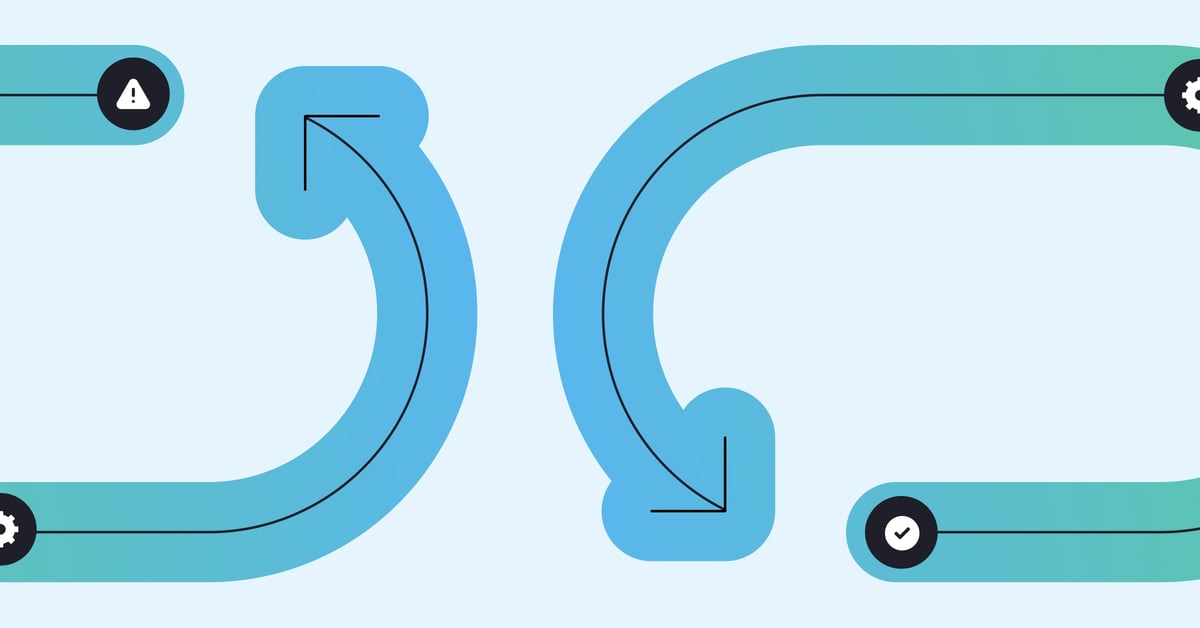The best ideas were grown on the fertile ground of failure. And like the most innovative humans, the best AI learns from its mistakes. Put the two together, and you’re on track for AI-powered, human-centric success.
What is an AI feedback loop?
A feedback loop is an algorithm that allows an AI model to become more accurate over time. It does this by identifying when an error has been made in the output created by the bot, and feeding this back into the AI model as input — allowing it to avoid similar errors in future.
It's kind of like when a teacher marks your math homework and points out where there are issues with your calculations, so you don't end up making the same mistake twice.
Fixing errors and learning from them — through AI feedback loops
Long gone are the days of simple, rules-based chatbots. Today, NLP-powered bots are able to serve customers in manifold ways thanks to deep learning and NLU technology.
Discover the 15 best AI chatbots on the market.
What sets this generation of conversational AI models apart from their predecessors? The ability to improve their accuracy using feedback loops.
Think of a conversational AI model as a copy of a human brain: It lives within what’s called an artificial neural network, consisting of several layers of AI that pass information between one another. This information is based on input from the real world. Once it's been passed along between the layers, the model produces output.
Sometimes, there are inaccuracies in information flows between these layers.
A typical example of this would be an AI-based image recognition program mixing up a dog with a cat. And in conversational AI for customer support, your model might confuse intents.
In both cases, the more incoming data the model receives, the more opportunities for it to make mistakes — and to learn from them. This is where feedback loops, or backpropagation algorithms, come in. They identify inconsistencies and feed the corrected information back into the model as input.
Taking cues from deep learning in your automated support
By the time you put your AI model into practice with Ultimate, it has been trained with both industry-specific benchmark data and your very own historical data to provide the most efficient and personalized automated customer journey possible. And it’s gotten there by constantly adjusting its accuracy through backpropagation algorithms, or feedback loops.
Cover the essentials of customer support automation in our interactive learning hub.
But the true magic of automation doesn’t stop with your virtual agent’s launch date. Because the nature of your support is bound to change over time (think peak season or changing consumer habits due to Covid-19), your AI model can always be adjusted to grow even more accurate.
How?
By applying the logic of feedback loops, or learning from past mistakes, to continuously improve your AI model. Except with a special twist — one involving human empathy and industry expertise.
More on AI-powered automation
Guide your AI model to the next level
Here’s where your chatbot or automation manager comes in. As your AI model flags potential inaccuracies, or confusions, in our Training Center, this increasingly sought-after member of your support team is here to verify that new incoming messages are always accurately (re-)routed to existing intents.
Learn how automation is powering more rewarding careers in CX.
They can also create novel intents based on newly occurring support topics — for example, by identifying customer sentiments or emotions and training your AI with real-time data to classify expressions and customize responses accordingly.
Deep learning is powering the revolution of automated customer support at lightning speed. And your human support staff hold the power to lead the way.
Large language models (LLMs): The next generation of AI
While intent-based automation is built on conversational AI models that learn and improve over time, a new generation of automation technology has landed: Generative AI.
And it's revolutionizing support automation.
Powered by LLMs — the groundbreaking tech behind OpenAI's human-like bot, ChatGPT — generative AI promises faster time to value and more sophisticated customer service automation solutions.
One of the most exciting use cases for gen AI is that it allows anyone to build a conversational bot in minutes. By connecting your knowledge base or help center to an LLM, you can create a custom-made generative AI bot that will instantly answer customer questions on any support topic. As long as the answer is contained within your help center, the bot can serve this information to customers in a natural, human way.
Learn how to prep your help center for generative AI.
And the best part? It just works — no training or maintenance required.
Hybrid bots: The future of support
As well as using generative AI to create stand-alone FAQ bots (like UltimateGPT), you can integrate this tech into a broader automation strategy. Pair the conversational capabilities of LLMs with the precision of intent-based models, and it makes for an impressive automation solution. At Ultimate, we call this the hybrid model. So while ChatGPT has seen in a new generation of bots that don't require any iteration — bot training isn't dead just yet.
